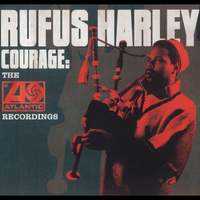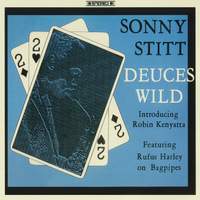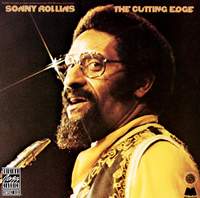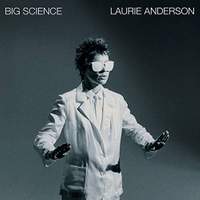Artist Profile,
Rufus Harley, The Pied Piper of Jazz

It was Alfred Hitchcock who remarked that the bagpipes originally came about when their inventor had attempted to create the musical likeness of “an indignant, asthmatic pig”. Tom Waits once compared the instrument’s unmistakable timbre to someone strangling a goose. Despite these zoological observations, generations to come will remember when, upon the passing of Elizabeth II in 2022, the late monarch was laid to rest accompanied by the sound of a lone piper, blowing out a traditional Scottish air in a poignant scene of age-old ceremony.
Imagine their surprise if, instead of the Queen’s Piper, the task had fallen to one Rufus Harley, American jazz musician and the first player to make an attempt at incorporating the Great Highland pipes into the genre – with some (albeit, short-lived) success. Think less ‘Sleep, Dearie, Sleep’ and more ‘Chim Chim Cheree’, rendered here instead as a thunderous Coltranesque waltz. That’d give the naysayers something to discuss, at least.
Yes, that's right - you really did just hear a tartan-clad piper keeping rank with Sonny Rollins. If the hard bop legend was looking to make a comeback following his most recent sabbatical, he certainly went all out with this daring statement. But who was Rufus Harley? A native Philadelphian who had already picked up a handful of reed-instruments by his early adulthood, he was inspired to take up the bagpipes after witnessing the televised funeral procession of President John F. Kennedy in 1963. Upon witnessing the cortege made up of Pipers of The Black Watch, Harley would soon make the decision of relocating to New York in order to pursue his untried fascination.
“I was very impressed with the sound of the instrument. I could understand it.”

It was in the Big Apple where he was first shown interest by Joel Dorn, the Grammy Award-winning entrepreneur and producer who would offer the budding piper a four-album record deal on Atlantic. It's clear from the covers of Harley's first album Bagpipe Blues (1965) and its follow-up Scotch & Soul (1966) that the label was keen to emphasise the Caledonian iconography as some sort of marketing gimmick, with its traditional garb and old-style serif fonts. But the musician's Celtic captivation was far from superficial. In fact, he was gifted his own tartan by the McLeod clan when members of the Scottish family caught wind of one of his appearances via broadcast. The piper habitually incorporated this detail into his regular get-up, complete with a horned Viking helmet as well the occasional pattern of American red, white and blue. Embodying his hometown's titular spirit of brotherly love, Harley would embrace this perceived kinship between several different cultures for the rest of his life.
Once you bring the existence of the world's first jazz piper to people's attention, many of them will instinctively turn their noses up (as if to scornfully ask how anyone could make this music worse). But, if you give him his dues, you'll soon discover a scorching experimentalist with a serious commitment to forging his own path. In hindsight, the sentiment behind his eulogy for the late president, 'A Tribute to Courage (JFK)', could also serve as a testament to Harley's bravery to be original and avoid the conformity that may otherwise have been expected of him.

Having refined a penchant of slinging the pipes over his right shoulder instead of left before retuning his instrument to a tonality better-suited for the idiom (his favourite key was B-flat minor), it's a fair guess that Harley was no stickler for tradition but rather an innovator of individual fashions in his own right. Just look at the multifaceted repertoire covered during his Atlantic years for a better understanding of the man's eclectic musical sensibilities: soulful hits like 'Feeling Good' comfortably rub shoulders with such pleasantries as 'Moon River', with Harley's versatile musicianship developing a more psychedelic Afro-jazz groove as the decade progressed.
Following that period, his credits are sadly few and far between, save for some momentary appearances with Laurie Anderson in the eighties and, during the following decade, The Roots. This didn't stop the musician from performing for the remainder of his life, however, as a string of more recent compilations and reissues of once privately-pressed albums now attest. Harley made his final soul-stirring recording in 2005 - which you can hear below - just one year before his death. It carries the spirit of an absolute jazz crusader, one so instilled with an abounding sense of liberty that he might share it with the rest of the world at large.
"It's all in the bag! Me, We, Us and Y'all!" - Rufus Harley (1936-2006)


Rufus Harley - The Pipes Are Calling
Our man Rufus Harley had a flair for the unconventional during his lifetime. This Philadelphia born-and-bred performer made a name for himself as the world's first jazz bagpipe musician, reinventing the modern genre for a brief period in his wake. For a spell, he was even invited to perform with the likes of Sonny Rollins and Herbie Mann! Get to know this tartan-clad tunesmith with the help of our playlist, featuring Harley's greatest performances on flute, saxophone and, of course, the Great Highland bagpipes. 99 minutes
Rufus also made his mark with these impressionable (if selective) credits below...
The mid-sixties peak of Harley’s musical career, here you have it all laid out over this four-album run of spirituals, show tunes and more. Unrestricted in his musical flow, the piper occasionally swaps out his primary instrument in favour of flute as well as the soprano and tenor sax, proving himself to be more than just a one-trick pony.
Available Formats: MP3, FLAC
As well as introducing multi-instrumentalist Robin Kenyatta to the wider public, the front cover of this 1967 recording teases a feature from Harley, even if we have to wait right until the very end to hear it; the final track’s title – ‘Pipin’ The Blues’ – a dead giveaway as to when he might finally show up. Even when he does, it still manages to take you by surprise.
Available Formats: MP3, FLAC
Once again invited to the bandstand as a guest, Harley takes to stage for this live cut alongside the groovy flautist for a number entitled ‘Flute Bag’, which he handles with ease. And, I have to say, this is Harley at his most locked-in, perfectly emulating the melody without encroaching on the rest of the proceedings. Not to mention, the audience sound pretty receptive, too.
Available Formats: MP3, FLAC
Harley makes perhaps his most notable appearance on this live album from the saxophone colossus, recorded at the Montreux Jazz Festival in 1974. On the defiant closer ‘Swing Low, Sweet Chariot’, the pair’s opening dialogue is a revelatory moment that combines traditional and avant-garde styles. The pipes are particularly suited to the well-known hymn tune and its pentatonic rigidity, with bluesy turns of phrase added for extra seasoning.
Available Formats: MP3, FLAC
Here’s your chance to hear Rufus in a more experimental setting than usual, this time accompanying everybody’s favourite cross-disciplinary performance artist and musician, Laurie Anderson, on the track 'Sweaters'. Her debut album, known for its inclusion of lead single 'O Superman', features a string of potent musical statements, each one as profoundly tantalising as the last. Trust a talent like her to offer Harley another brief but bold moment in the sun.
Available Format: Vinyl Record







